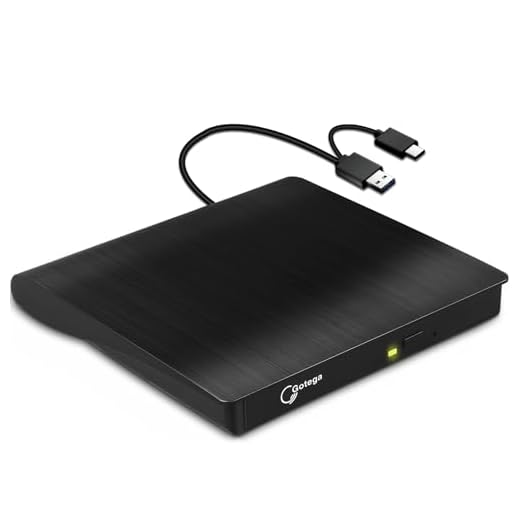







So you’ve heard about the benefits of Linux and you’re thinking about making the switch, but there’s one question on your mind: how do you know if your laptop is compatible with Linux? Well, worry not! In this article, we’ll break down everything you need to know to determine if your laptop is Linux-ready. From hardware requirements to software compatibility, we’ll guide you through the process of ensuring a smooth transition to this open-source operating system. So grab your laptop and let’s dive in!

Checking Hardware Compatibility
Researching Laptop Specifications
When considering whether your laptop is compatible with Linux, the first step is to research its specifications. You can find these specifications in the user manual or on the manufacturer’s website. Look for information regarding the processor, RAM, storage capacity, and other hardware components. Linux can run on a wide range of hardware configurations, but it’s important to ensure that your laptop meets the minimum system requirements.
Checking Linux Distributions’ Hardware Compatibility Lists
To further verify the compatibility of your laptop with Linux, you can refer to the hardware compatibility lists provided by various Linux distributions. These lists offer detailed information about different laptop models and their compatibility with specific Linux distributions. It’s always recommended to choose a distribution that explicitly supports your hardware to ensure a smoother experience.
Considering System Requirements
Minimum System Requirements for Linux
Linux distributions usually have minimum system requirements that need to be met for smooth operation. These requirements typically include specifications such as a certain CPU speed, a minimum amount of RAM, and a specific amount of storage space. It’s essential to check if your laptop meets these minimum requirements before installing Linux. Failing to meet these requirements may result in performance issues and functionality limitations.
Recommended System Requirements for Linux
While meeting the minimum system requirements is crucial, it’s worth considering the recommended system requirements as well. These recommendations often provide a better user experience and enhanced performance. Although not mandatory, meeting the recommended system requirements can help ensure that your laptop is capable of running Linux optimally, especially if you plan to use resource-intensive applications or run multiple tasks simultaneously.
Considering UEFI or BIOS
Understanding UEFI and BIOS
Before installing Linux on your laptop, it’s important to understand the difference between UEFI (Unified Extensible Firmware Interface) and BIOS (Basic Input/Output System). UEFI is the modern replacement for BIOS, offering improved security features and faster boot times. However, not all laptops support UEFI, so it’s essential to determine which firmware your laptop uses to ensure compatibility with Linux.
Checking Laptop’s UEFI or BIOS Compatibility with Linux
To check whether your laptop’s UEFI or BIOS is compatible with Linux, consult the documentation provided by the laptop manufacturer. They may provide instructions on how to access and configure the UEFI or BIOS settings. Additionally, you can visit Linux forums or community websites where users often share their experiences and compatibility issues with different laptops. Doing a quick search with your laptop model and “Linux compatibility” can provide valuable insights.
Understanding Driver Support
Native Linux Driver Support
Linux has a vast range of hardware drivers included in the kernel, ensuring compatibility with a variety of devices. Native Linux driver support means that the necessary drivers for your laptop’s hardware components are already included in the Linux distribution you’re considering. This compatibility ensures that features such as wireless connectivity, audio, and graphics work smoothly without the need for additional configuration or installation.
Third-Party Driver Support
In some cases, your laptop’s hardware may require additional drivers that are not included in the Linux distribution. These drivers are often provided by third-party manufacturers and may need to be manually installed to ensure full functionality. Before installing Linux, research whether your laptop’s hardware requires any additional drivers and if they are available for Linux. It’s important to check the compatibility and availability of these drivers to ensure a seamless experience.

Checking Device Compatibility
Validating Wi-Fi and Ethernet Support
One of the crucial aspects of laptop compatibility with Linux is the support for Wi-Fi and Ethernet connections. Wi-Fi and Ethernet adapters play a significant role in your laptop’s connectivity capabilities. Before diving into Linux installation, verify that your laptop’s wireless and wired network adapters are compatible with the Linux distribution of your choice. Refer to the hardware compatibility lists mentioned earlier or consult forums and communities to ensure Wi-Fi and Ethernet functionality.
Verifying Graphics Card Compatibility
For those who use laptops for gaming, video editing, or graphic-intensive applications, verifying graphics card compatibility is essential. Linux has made significant strides in supporting a wide range of graphics cards, both integrated and dedicated. However, it’s crucial to research if your laptop’s graphics card is fully supported by the Linux distribution you plan to install. Compatibility issues with graphics cards can lead to limited functionalities or inadequate performance.
Checking Audio and Webcam Support
If your laptop’s audio and webcam functionality are important to you, it’s essential to verify their compatibility with Linux. Audio drivers can vary between laptop models, so it’s worth researching if your laptop’s audio chipset is supported by the Linux distribution. Similarly, webcams may require specific drivers or firmware to work correctly in Linux. Checking for compatibility beforehand ensures that you can fully utilize the audio and webcam capabilities of your laptop with Linux.
Considering Secure Boot
Understanding Secure Boot
Secure Boot is a feature designed to protect the boot process and prevent unauthorized operating system or bootloader installation. It’s a security mechanism that checks the digital signature of the bootloader and ensures that only trusted software is allowed to run during startup. While Secure Boot can enhance security, it may pose compatibility issues with Linux installations, as some distributions might not have a properly signed bootloader.
Checking Laptop’s Secure Boot Compatibility with Linux
Before installing Linux, it’s essential to check if your laptop’s firmware supports disabling or configuring Secure Boot. Some laptops offer the flexibility to disable Secure Boot or add trusted keys, allowing you to install Linux without issues. However, other laptops may have restrictions in place, making it more challenging to install Linux with Secure Boot enabled. Consult your laptop’s documentation or contact the manufacturer for guidance on Secure Boot compatibility.
Considering Preinstalled OS
Checking if Laptop Comes with Linux Preinstalled
Some laptop models come with Linux preinstalled by the manufacturer. These laptops are typically designed to work seamlessly with the specific Linux distribution installed. If you’re in the market for a new laptop compatible with Linux, considering models that come with Linux preinstalled can save you time and effort in verifying compatibility. Manufacturers often provide support for these laptops, ensuring that you have an optimal Linux experience.
Verifying Compatibility with Other Operating Systems
Even if your laptop does not come with Linux preinstalled, it’s crucial to verify its compatibility with other operating systems if you plan to have a dual boot setup or switch between different operating systems. Research the laptop model to ensure it supports the installation and operation of multiple operating systems. Compatibility with Linux may indicate broader compatibility, but it’s always best to confirm the laptop’s ability to run other operating systems alongside Linux.
Considering Battery Life
Researching Linux’s Impact on Battery Life
Battery life is an important aspect to consider when using a laptop. While Linux distributions have made significant strides in power management, it’s worth researching how different distributions affect battery life on your laptop model. Some distributions may have more efficient power management features or allow for more customization options. By understanding Linux’s impact on battery life, you can make an informed decision and select a distribution that suits your needs.
Considering Power Management Features
To maximize battery life on your laptop with Linux, consider distributions that offer robust power management features. Popular distributions often have power management utilities that allow you to adjust settings such as screen brightness, CPU frequency scaling, and sleep settings. These features can help optimize battery usage and extend your laptop’s battery life. Research the power management capabilities offered by different distributions and choose the one that aligns with your requirements.
Researching Community Support
Checking Online Forums and Communities
The Linux community is known for its strong support and vibrant online forums and communities. Before installing Linux on your laptop, explore these resources to gather insights and experiences of other users with similar laptops. Online forums and communities can provide valuable information regarding compatibility, troubleshooting, and tips for specific laptop models. By tapping into the collective knowledge of the community, you can mitigate potential issues and ensure a smoother Linux experience.
Reaching Out to Linux Users with Similar Laptops
If you have specific concerns or questions about your laptop’s compatibility with Linux, reach out to other Linux users who own similar laptop models. This can be done through online forums, community websites, or social media platforms dedicated to Linux enthusiasts. By sharing your laptop model and specific concerns, you can receive personalized advice and recommendations based on first-hand experiences. The Linux community is generally friendly and eager to help, so don’t hesitate to seek assistance when needed.
Exploring Dual Boot Options
Understanding Dual Booting
Dual booting is the process of installing two operating systems on the same laptop, allowing you to choose between them during startup. If you want to keep your current operating system alongside Linux, it’s crucial to verify your laptop’s compatibility with dual booting. Not all laptops support dual booting, and compatibility can vary depending on the specific hardware and firmware requirements of your laptop.
Checking Laptop’s Compatibility with Dual Booting
When considering dual booting, consult your laptop’s documentation or contact the manufacturer to determine if it supports this configuration. Some laptops have specific instructions or features designed to facilitate dual boot setups, while others may have limitations or restrictions. Additionally, researching online forums and communities for users who have successfully set up dual boot configurations on similar laptop models can provide valuable insights and guidance.
By following these steps and thoroughly researching your laptop’s hardware compatibility, system requirements, firmware, driver support, device compatibility, and other factors, you can ensure a smooth transition to Linux. While the vast majority of laptops are compatible with Linux, conducting proper research and referring to reliable sources will help minimize any potential compatibility issues and ensure a positive Linux experience. Happy Linux exploring!





